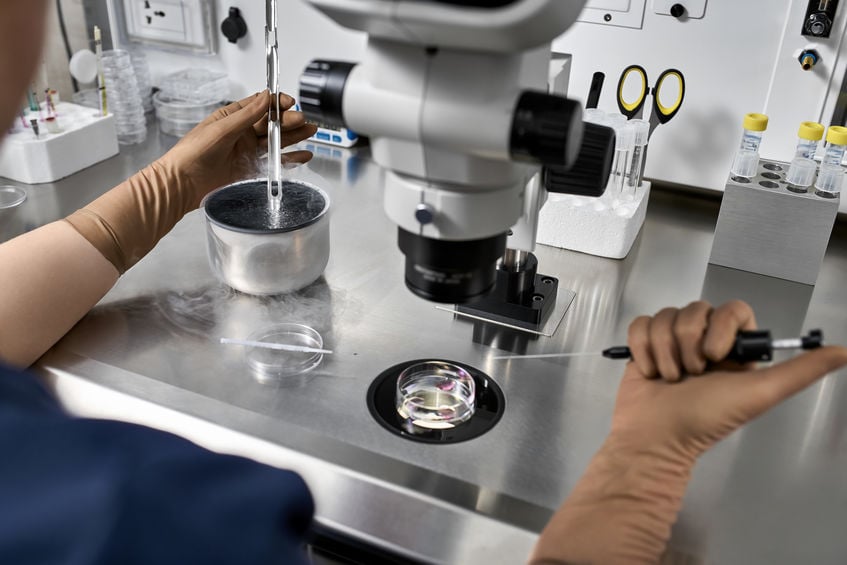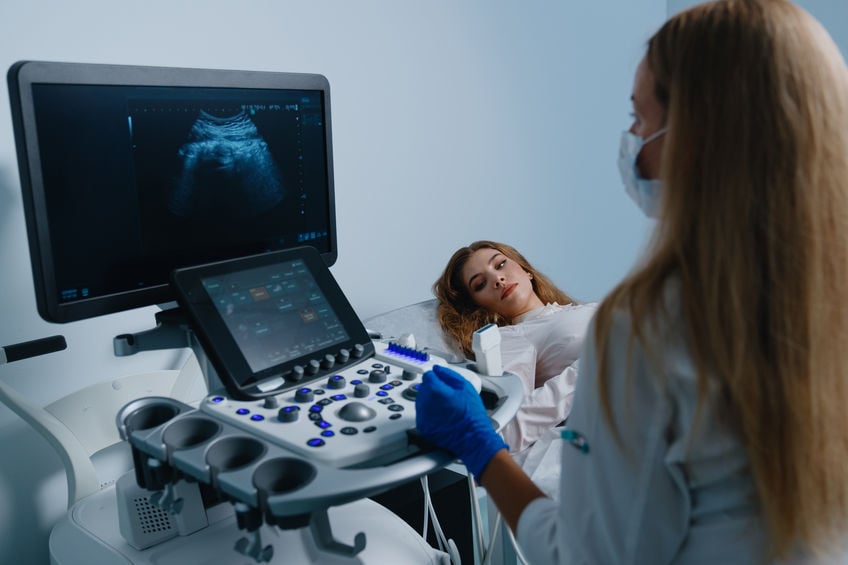Diagnosing Infertility
Couples struggling to get pregnant may be offered a hysterosalpingogram (HSG) or sonohysterogram (SHG) to diagnose infertility. These tests allow a fertility doctor to visualize the fallopian tubes and uterine cavity to see if any blockages are present. HSG and SHG are often ordered as part of a fertility workup before in vitro fertilization (IVF) is pursued. Can this test flush out the reproductive system and increase pregnancy rates?

Traveling to the uterus
A clear path is needed for an embryo to travel down the fallopian tube and implant in the uterus. Pregnancy is harder to achieve if a blockage is present, such as a polyp or scar tissue. The uterus also needs to be receptive to the embryo, which is more difficult with growths such as fibroids taking up space. Women with a blocked tube or growths in the uterus will have more difficulty getting pregnant, but medical interventions can help.
HSG vs SHG
The best way for a doctor to visualize the tubes and uterus is to order a hysterosalpingogram or sonohysterogram. A contrast agent or dye is injected into the tubes and uterus during a hysterosalpingogram. Next, an x-ray machine is used to visualize the area, with the dye outlining the shape of the tubes and uterus. A sonohysterogram works similarly but uses sterile saline water and ultrasound to visualize the same area. Both tests can identify blockages.
Choosing the right approach
Since both HSG and SHG provide the same information, many people think the procedures are interchangeable, but there are slight differences. The most significant difference is that HSG uses an x-ray, so a low level of radiation is present. For this reason, the test is usually done early in the menstrual cycle before pregnancy is possible. This ensures the developing baby is not exposed to radiation, should conception have happened before the test. Research also shows that SHG is more sensitive, specific, and accurate in evaluating uterine defects.
Improving IVF outcomes
Research and personal experience suggest that women are more likely to get pregnant in the 3 months following an HSG or SHG test. While not entirely understood, the thought is that the dye or saline flushes out the tubes and uterus, making pregnancy more likely. Another idea is that the HSG dye enhances the uterus lining, making an embryo more likely to implant. Whatever the explanation, women who have an HSG or SHG done may be more likely to conceive naturally or have better success with IVF shortly after the test is completed. However, keep in mind that the primary goal of the HSG or SHG test is to diagnose problems with the tubes and uterus, not boost conception odds.
Flushed out for pregnancy
An HSG or SHG can diagnose important problems that may be causing or contributing to infertility. For some women, the procedure has the added benefit of flushing out the tubes and increasing the chances of pregnancy. IVF patients may see higher success rates when the transfer happens soon after an HSG or SHG flush out, but more research is needed. Pregnancy is possible with clear tubes and a uterus ready to accept an embryo.





